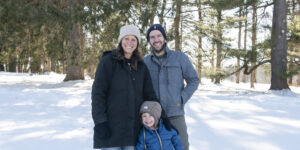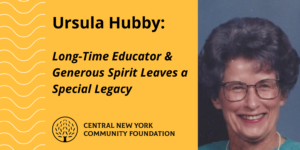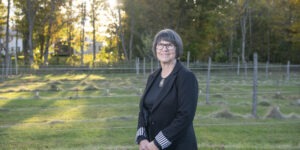Poet Robert Burns said it first and John Steinbeck reminded us, “the best-laid plans of mice and men often go awry.” A year into the pandemic, this sentiment is all too familiar. Our homes, schools, workplaces, and communities were transformed overnight. So, too, were life’s big moments. Graduations, weddings, funerals, birthdays, vacations and reunions were either postponed or re-envisioned.
If the pandemic changed the way we learn, work, gather, celebrate and mourn, it also impacted the way we plan. Communities across the country, including our own, saw surges in financial and estate planning as individuals sought to get their affairs in order amidst ongoing uncertainty. Perhaps some clients found they had extra time to reflect on values and long-term goals, while others expressed a heightened sense of urgency. Regardless, advisors met the moment in kind by offering innovative ways to meet, discuss and implement plans.
The Best-Laid plans embrace change
The fact remains that uncertainty is a constant and all long-term plans should account for it. The same is true for the charitable portions of your clients’ plans. What happens if the nonprofit your client loves today is gone tomorrow, or if the trustee of their private foundation passes away? None of us can anticipate the full range of changes the future may bring, but effective planning can help by incorporating flexibility and contingencies.
Here are some of the ways that the Community Foundation can help your charitable clients:
- Creating their legacy plan: We strive to help individuals who care about this community to be remembered by it. We can work with your clients to document their charitable intentions and wishes for remembrance by creating personalized legacy plans.
- Starting simple: We recognize that everyone has a different amount of time and capacity to devote to planning. Advisors may use our legacy planning forms with clients to document initial intentions and instructions for any planned gifts to the Community Foundation. These forms may be used as a first step to cover the basics prior to additional discernment with Community Foundation staff. To access these forms online, visit cnycf.org/legacyplan.
- Diving deeper: When the timing is right, we can work with your clients using guided writing exercises and values-based discussions to document their personal giving story and wishes for the future use of their charitable legacy fund. For more information, visit cnycf.org/legacyplan.
- Making it easy for them to change their plan: Once a legacy plan is created, the will or other beneficiary designations can simply direct funds to the Community Foundation to be used as instructed. Any updates to the legacy plan require no changes to the formal financial or estate plan.
- Helping them determine the right type of gift: Legacy planning can be much more than a simple bequest. There are a variety of techniques available for your clients who want to provide for loved ones, reduce taxes, and support worthy causes. We will work with you and your client to find the gift that achieves their goals.
- Facilitating family philanthropy: Many times people don’t share their giving plan with their family. They often think that the family “just gets it.” Unfortunately, this is rarely the case. The Community Foundation can work with your client to effectively share their philanthropic plan with their family.
- Keeping their legacy alive: The Community Foundation has been fulfilling the charitable wishes of people in our community since 1927. Your clients will know that even 100 years after they are gone, their gift will be actively achieving their goals and their story will live on.
Though plenty is sure to change in the future, one thing will not: our commitment to this community and its generous caretakers. Legacy planning work rarely costs your clients anything because the work of fostering philanthropy and preserving charitable legacies is part of our nonprofit mission. If you have a client with charitable interests, we hope you will let us be your partner in planning.









